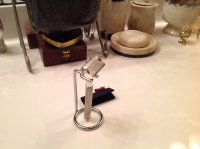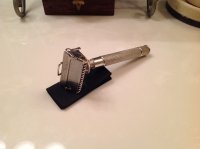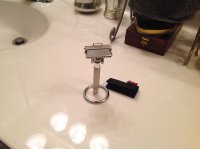I just received an early Rapide razor that cannot accept Gem blades. It came in a red tin case and has the Henckels twins logo on the case so was apparently manufactured by Henckels. However the case does not have the Henckels name anywhere on it. The razor itself is marked ERNST SCHARFF and does not include the blade stops needed by GEM blades. It can be identified by the name on the handle and the use of set screws on the front of the razor head that are used to adjust the height that a wedge blade sits at. So it is only compatible with tapered wedge blades.
I have seen photos of a virtually identically cased but apparently later manufacture Rapide which has the Henckels name on the case and per the photos has blade stops, making it compatible with Gem or the Feather Valet Autostrop compatible razor blades. Something to watch for if buying a Rapide for use with modern blades.
I have seen photos of a virtually identically cased but apparently later manufacture Rapide which has the Henckels name on the case and per the photos has blade stops, making it compatible with Gem or the Feather Valet Autostrop compatible razor blades. Something to watch for if buying a Rapide for use with modern blades.





